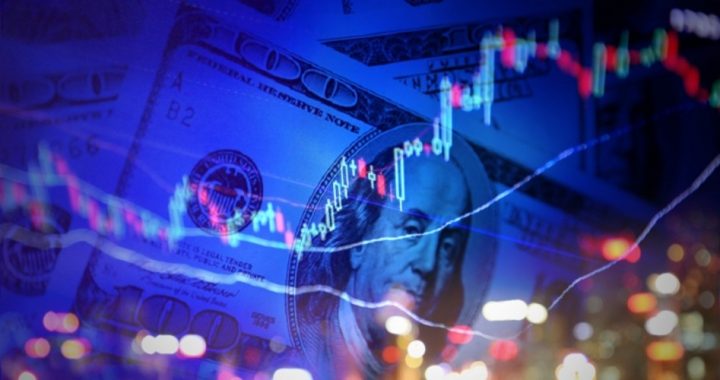
According to the Commerce Department, the U.S. economy grew by 2.9 percent last year. The economy grew at a 2.6-percent annual rate in the fourth quarter of 2018, beating forecasters’ expectations of 2.2 percent. After all, they looked at 4.2 percent growth in the second quarter, 3.4 percent growth in the third quarter, and so they just assumed that the economy would continue to trend downwards in the fourth. Some even began to use the “r” word (recession), predicting such an event for late 2019 or early 2020.
Instead, economic growth in the fourth quarter clocked in at 3.1 percent, ahead of the same period a year ago.
Non-professional observers see a much different picture than the professional naysayers. Brian Coulton of Fitch Ratings said:
Consumer spending continued to grow solidly and, most encouragingly, business investment growth recovered sharply after a dip in the third quarter.
Despite big external headwinds and financial market volatility in the fourth quarter, U.S. firms are not retrenching sharply on capex [capital expenditures]. Labor market strength and ongoing fiscal stimulus should see domestic demand expanding [into 2019].
Avery Shenfeld of CIBC Economics reprised Coulton:
U.S. fourth-quarter GDP was not bad, not bad at all, considering all the fretting about a slowdown that dominated the news flow during the quarter.
The 2.6% annualized pace was about a half point above our forecast and the consensus, helped by a firmer reading than we expected on business investment spending (up 6.2% annualized).
Renaissance Macro Research, which looks at research and development (R&D) spending across the globe, reported that R&D spending in the United States “is exploding, advancing 13.5% annualized in Q4 [of 2018], climbing 9.9% over the last year. Private R&D spending now represents 2.3% of U.S. GDP, an all-time record. R&D spending is usually a good sign for future productivity growth.”
Sal Guatieri of the Canadian firm BMO Capital Markets expanded on Renaissance’s report: “Business investment was a big positive surprise, with nonresidential spending soaring 6.2% on the back of a 6.7% jump in equipment spending and a honking 13.1% increase in intellectual property products. Tariffs and the trade war are denting business sentiment, but evidently not enough to seriously derail hiring or spending plans.”
Anecdotes from other sectors question the negative outlook for 2019 still being hawked by prognosticators. For example, pending home sales rose 4.6 percent in January over December where forecasters had expected an increase of just 0.8 percent. The four-week moving average of unemployment claims declined in January, reflecting employers’ reluctance to lay people off. Those same employers are raising wages not only to keep them but to keep them happy.
The Chicago Purchasing Managers Index (PMI), from the Institute of Supply Management on Thursday, surged eight full percentage points in February, the largest monthly rise in two years, while its “new orders” component rose 15.2 points. Shaily Mittal, a senior economist at MNI Indicators, said “the sharp pickup in the barometer … underpinned by the growth in demand and production, showcases a healthy image of the U.S. economy.”
That “healthy image” doesn’t fully reflect what’s really going on in the U.S. economy, according to Mark Skousen. Years ago Skousen, frustrated by the reporting by the Commerce Department on only the “finished goods” part of the economy (and calling it the Gross Domestic Product, or GDP), developed the “gross output” (GO) indicator. The Bureau of Economic Analysis (BEA) now reports the GO a week ahead of its report on the GDP. Noted Skousen:
Contrary to what the media says, consumer spending does not drive the economy, and does not represent two-thirds of the economy.
Using GO as a better, more accurate measure of total spending in the economy, business spending (B2B) is almost twice the size as consumer spending. Consumer spending is the effect, not the cause, of prosperity.
Twice the size? By measuring economic activity at every level in the economy (and not just consumer spending), “the results are eye-popping” says Skousen: “Total spending on new goods and services topped $45 trillion for the first time [in history].” He added, “Real GO climbed at an annualized rate of 4.6% in the 3rd quarter, much faster than GDP. Business-to-business (B2B) spending rose even faster, 5.8% in real terms, much more than consumer spending.”
Skousen’s outlook for 2019? “Whenever GO is growing faster than GDP, as it has been doing in 2018, it’s a positive sign that the economy is still robust and growing. That’s what we are seeing.”
He sees the manufacturing sector, which comprises one-sixth of the U.S. economy, as growing at 9.1 percent in 2018’s third quarter, with the durable goods part of that sector advancing at nearly 13 percent. He sees the finance, insurance, real estate, rental and leasing sector (the largest sector of the economy at nearly 20 percent) growing at 4.8 percent, with construction expanding at a seven-percent annual rate and the education, healthcare, and social assistance sector climbing 8.1 percent in the third quarter of 2018.
Skousen said, “GDP leaves out the supply chain and business to business [B2B] transactions in the production of intermediate inputs. That’s a big part of the economy. GO includes B2B activity that is vital to the production process. No one should ignore what is going on in the supply chain of the economy.”
When the Commerce Department issues is report on GDP next month, informed readers will not only take that number with a large grain of salt, they will double it to get a true measure of the U.S. economy’s more accurate (and astonishing) output.
Image: honglouwawa via iStock / Getty Images Plus
An Ivy League graduate and former investment advisor, Bob is a regular contributor to The New American magazine, writing primarily on economics and politics. He can be reached at [email protected].
Related article:
What Recession? Jobs, Manufacturing, Consumer Sentiment All Up in January



